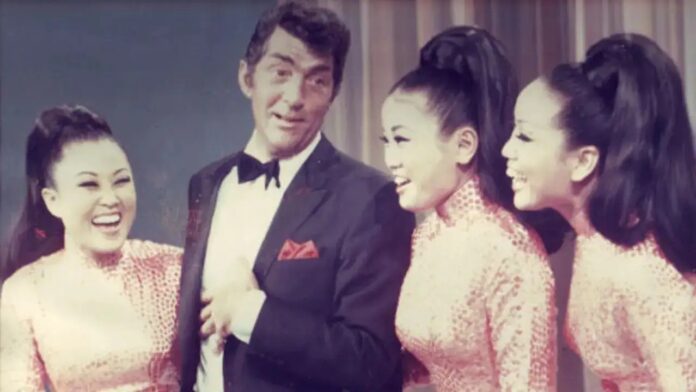The Kim Sisters with Dean Martin (Photo: Wikimedia Commons)
One such group was the Kim Sisters, a Korean girl trio who set foot in the United States in the late 1950s, becoming an unexpected sensation. At a time when Korean culture was largely unexplored in the West, they introduced American audiences to the melodic beauty of Korean songs, despite their limited knowledge of English. Their journey reveals not just the evolution of a genre but also the tenacity of those who dared to dream beyond borders.
In just three months after their relocation, the sisters took to stage to perform in the *China Doll Revue*, marking their television debut in the U.S. Until then, Korean music was relatively obscure in America. The Kim Sisters, comprising Sue (Sook-ja), Ai-ja, and their cousin Mia (Min-ja), not only sang but embodied the spirit of cultural fusion, bringing a taste of Korea to the West.
The sisters had musical roots deeply embedded in their family history. Raised near Seoul, Sue and Ai-ja came from a lineage of artists. Their father, Kim Hai-Song, was a well-known composer and fervent anti-communist whose work combined Western influences into Korean music. His imprisonment and execution during the Korean War, coupled with their mother Lee Nan-Young’s struggle to raise seven children alone, set a backdrop of both adversity and artistry for the Kim Sisters. This environment not only shaped their musical ambitions but also imbued their performances with a profound sense of purpose, where success equated to survival.
This dynamic not only complicated their acceptance in mainstream music but also highlighted the cultural inconsistencies of the time. While the sisters forged a path for themselves, they unintentionally became symbols of the East-West cultural exchange, embodying both the admiration and the patronization often directed at Asian artists in America.
In retracing the journey of the Kim Sisters, we uncover the fervent spirit that laid the groundwork for today’s global music phenomenon, where cultures mix, and differences become strengths. Their story resonates not just in the context of their time but in the present landscape where diversity and representation continue to shape the music industry.
